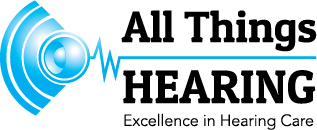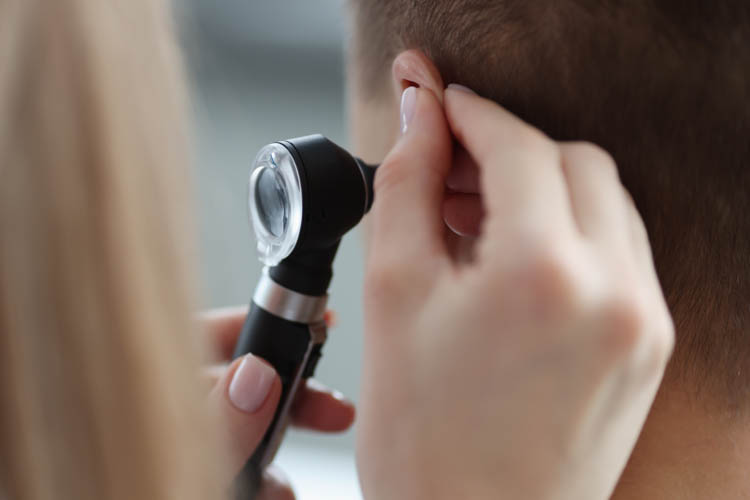During an adult hearing test, you’ll discuss your medical history and hearing concerns with an audiologist. They’ll examine your ears with an otoscope to check for issues like earwax or infections. You’ll undergo pure-tone audiometry in a soundproof booth to assess your hearing sensitivity and determine any hearing loss. Speech audiometry will test your ability to understand speech in various settings. Tympanometry might also be used to assess middle ear function. Afterwards, the audiologist will explain the results and discuss any necessary treatments or further tests. Stay to gain a deeper understanding of each step.
Initial Consultation
During your initial consultation, the audiologist will begin by discussing your medical history and any hearing concerns you might have. They’ll ask about specific symptoms you’ve noticed, such as difficulty understanding conversations, needing to increase the volume on your TV, or experiencing any ringing in your ears. It’s essential to mention any situations where you struggle to hear clearly, whether in noisy environments or during one-on-one conversations.
Next, the audiologist will explain the hearing test process so you know what to expect. They might describe the types of tests they’ll conduct, such as pure-tone audiometry, speech testing, and tympanometry. You’ll understand how each test helps them assess different aspects of your hearing.
They’ll also take time to address any questions or concerns you have about the testing process, ensuring you’re comfortable and informed. This open communication helps build a trusting relationship, making it easier for you to express any worries or confusion.
Medical History Review
The audiologist will review your medical history to identify any conditions that might affect your hearing. They will ask about any past ear infections, surgeries, or injuries you have experienced. If you have had exposure to loud noises at work or during leisure activities, make sure to mention it. This information helps the audiologist understand the potential root causes of your hearing issues.
You will also be asked about any medications you are currently taking, as some drugs can impact hearing. Be honest about your lifestyle habits as well. For example, smoking and excessive alcohol consumption can contribute to hearing loss. The audiologist may inquire about your overall health, including any chronic conditions like diabetes or hypertension, which are linked to hearing problems.
Family history is another important topic. If hearing loss runs in your family, this could be a significant factor. The more detailed and accurate you are during this review, the better the audiologist can tailor the hearing test to your specific needs. They are not just gathering facts for the sake of it; they are trying to get a complete picture of your auditory health to provide the most accurate diagnosis and effective treatment plan.
Physical Ear Examination
After gathering detailed medical history, your audiologist will perform a physical ear examination to identify any visible issues. This step is crucial for spotting anything that might affect your hearing, such as earwax buildup, infections, or abnormalities in the ear canal or eardrum.
To start, your audiologist will use an instrument called an otoscope. An otoscope is a hand-held device with a light and a magnifying lens that allows a detailed view inside your ear. You might feel a little pressure, but it shouldn’t be painful. The audiologist will gently pull your ear back and up to straighten the ear canal, providing a clearer view.
They’ll look for signs of infection, fluid behind the eardrum, perforations, or any foreign objects. If there’s excessive earwax, they might recommend a safe removal method. By examining your outer and middle ear, the audiologist can rule out physical conditions that might be causing hearing issues.
This thorough check ensures that any potential problems are identified early on, allowing for appropriate treatment or further testing if necessary. It’s a straightforward process that plays a vital role in understanding your overall ear health.
Pure-Tone Audiometry
To accurately measure your hearing sensitivity, pure-tone audiometry is a key diagnostic test that evaluates your ability to hear sounds at various pitches and volumes. During this test, you’ll wear headphones and sit in a soundproof booth to ensure no background noise interferes with the results. The audiologist will play a series of tones, each at a specific frequency and volume, one ear at a time. Your task is to indicate whenever you hear a sound, usually by pressing a button or raising your hand.
The tones will vary from low to high frequencies and from soft to loud volumes. This helps the audiologist determine the quietest sounds you can hear at different pitches, known as your hearing threshold. The results are plotted on an audiogram, a graph that shows your hearing sensitivity across a range of frequencies.
This test is crucial for diagnosing the type and degree of hearing loss you might have. By pinpointing the specific frequencies you struggle with, your audiologist can tailor a treatment plan to address your unique hearing needs. Pure-tone audiometry is straightforward but provides vital information for understanding your hearing health.
Speech Audiometry
Building on the insights from pure-tone audiometry, speech audiometry assesses your ability to hear and understand speech in various settings. During this test, you’ll listen to different words and phrases at varying volumes. The audiologist will ask you to repeat what you hear. This helps determine the softest speech you can understand and how well you can comprehend speech in a noisy environment.
Speech audiometry is important because hearing pure tones doesn’t fully capture your everyday hearing challenges. This test provides a more practical assessment of your hearing abilities, especially in real-world situations where background noise is common.
Here are some key components of speech audiometry:
- Speech Recognition Threshold (SRT): Identifies the lowest volume at which you can recognise and repeat back words accurately.
- Word Recognition Score (WRS): Measures how well you can identify and repeat words at a comfortable listening level.
- Speech-in-Noise Testing: Assesses your ability to understand speech amidst background noise, mimicking everyday environments.
- Most Comfortable Listening Level (MCL): Determines the volume at which you find listening to speech most comfortable.
Understanding these components will give you a clearer picture of your hearing health and help your audiologist tailor the best solutions for you.
Tympanometry Test
How does a tympanometry test help in assessing your middle ear function? This test measures the movement of your eardrum in response to changes in air pressure. By doing so, it helps detect any issues in the middle ear, such as fluid buildup, eardrum perforation, or Eustachian tube dysfunction. Essentially, it provides valuable information about how well your middle ear is transmitting sound to your inner ear.
During the test, a small probe is placed into your ear canal, creating a seal. You’ll feel slight pressure changes, similar to what happens during a flight or diving underwater. The probe emits a tone while varying the air pressure inside your ear canal. This process doesn’t hurt but might feel a bit strange or uncomfortable.
The tympanometer records how your eardrum responds to these pressure changes and produces a graph called a tympanogram. This graph helps the audiologist understand the status of your middle ear function. It’s particularly useful for identifying conditions like otitis media or otosclerosis. Remember, the tympanometry test is just one part of a comprehensive hearing evaluation, providing key insights into your overall ear health.
Test Results Discussion
After completing the tympanometry test, your audiologist will review the results to discuss what they reveal about your middle ear health. This test helps identify issues such as fluid in the ear, eardrum perforations, or Eustachian tube dysfunction. Your audiologist will go over the graphs and explain what each peak and dip indicates. Understanding these results can be crucial for diagnosing potential problems and deciding the next steps.
During the discussion, you might encounter a few key terms and explanations:
- Normal Results: If your tympanogram shows a peak within the normal range, your middle ear is functioning well.
- Flat Tympanogram: This indicates fluid in the middle ear or a perforated eardrum.
- Negative Pressure: A peak that’s shifted negatively suggests Eustachian tube dysfunction, which can cause discomfort or hearing issues.
- Excessive Mobility: If the graph shows too much movement, it might indicate a problem with the ossicles or a healed perforation.
Your audiologist will explain the implications of these findings and may recommend further testing or treatment options if needed. This discussion is essential to ensure you fully understand your hearing health and any necessary interventions.



